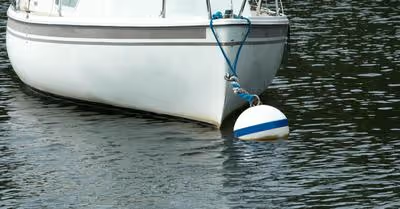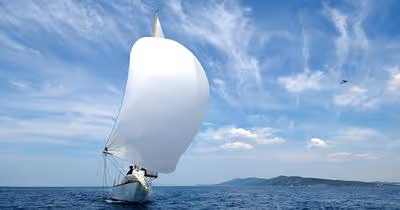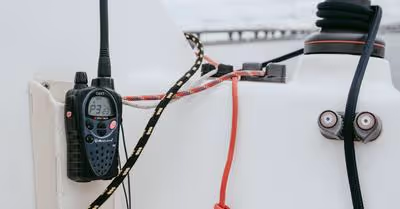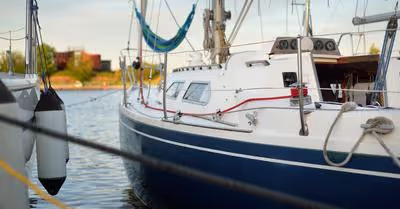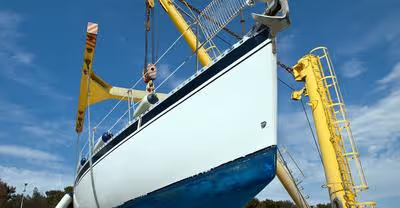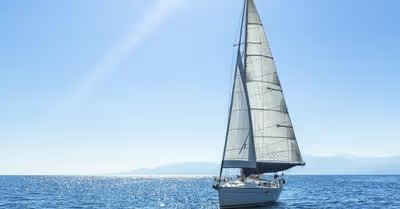Table of Contents
Catalina Yacht Sailboats
The Catalina 22 is one of the five original associates of the Sailboat Hall of Fame and is the most economically triumphant sailboat of all time. Catalina continues to produce this yacht in order to meet the high demand. The Catalina 25 and Catalina 27, the following two models in Catalina's series, are no longer built, despite ongoing market production and demand for a family boat and racer of this size.
The Catalina 22's build quality is adequate for its intended use as a weekender and daysailer in inland and protected seas. Hand-laid fiberglass makes up the hull. The deck is made of fiberglass with a plywood core. Catalina's favored shoebox hull-to-deck junction is merely secured with chemical adhesive and screws, which is adequate for the boat's intended cruising areas. The interior fit and finish are exceptional for a manufactured boat of this size and class. The interior is lined with molded fiberglass. The interior woodwork is made of teak veneer with marine ply and some genuine teak pieces for structural support.
Common Issues with Catalina Yacht Sailboats
The brand-new Catalina sailboats don’t typically come with any issues since they have virtually no common operating problems down the line and are extremely high-quality. Manufacturers use the highest quality economical material available to build these sailboats.
Even the best materials are now cheap for basic sailboats, thanks to contemporary manufacturing techniques. Catalina yachts are today's high-end sailboats, with prices ranging from $200,000 to $300,000. As a result, you can anticipate top-notch dependability and design.
Are there any issues with older Catalina sailboats?
Catalina sailboats that have been used are a different story. These boats were built and sold at a significantly lesser cost, using more "standard" quality materials. In several cases, veneer was employed instead of wood for various purposes.
They're still fantastic boats, and some of the best on the used market. Catalina boats are inexpensive, especially the mass-produced ones from the 1970s and 1980s.
Catalina Yacht Sailboats- Common Issues
The Catalina Yacht Sailboats are one of the most commonly mass-produced boats to exist. These magnificent sailboats were constructed at a time when there weren’t as many quality supplies to choose from and when fiberglass boat construction was moderately well recognized.
We have come a long way and learned a lot since then. It has now been more than 50 years since the primary Catalina sailboats rolled off the manufacturing line. However, there are a few common issues with the Catalina Yacht Sailboats, despite their high quality, that warrants some examination by prospective buyers and owners.
Here’s how you can spot common issues on the Catalina yachts and how to look out for them:
1. Mast Remains
On fiberglass vessels with Bermuda-rigged sloops and aluminum masts, standing rigging is critical. Almost all Catalina sailboats use stainless steel stay cables to keep their masts up, unlike solid-masted vessels such as gaff-rigged catboats.
Corroded or incorrectly tightened stays are prevalent on older Catalina sailboats. This is bad news because it frequently results in complete stay failure and mast collapse. On an ancient fiberglass yacht, you should always inspect the standing rigging and repair it as soon as it stretches or shows signs of corrosion.
2. Water Ingress Causes Deck Failure
Deck failures are common on old Catalina sailboats, and they're quite easy to notice once the damage has progressed. When the water present on the rots the organic deck core material by making its way through, deck failure usually occurs in Catalina sailboats.
For strength and water tightness, fiberglass boat decks are typically manufactured from a combination of fiberglass, particleboard, foam, and wood.
Water can get inside when the outer layer deteriorates or breaks, turning the structural support below into worthless goo. This will cause someone to step onto a surface that was formally meant to be walked on safely.
Small soft patches on a Catalina sailboat's deck can usually be fixed quite easily, albeit you will need to cut out and remove the afflicted part. When the rot spreads to a more critical region of the boat, such as a structural support beam, it becomes a bigger problem.
If you carefully examine the surface, you’ll be able to notice several weak spots on the deck. A weak spot usually buckles underweight and is a little spongy. Consider it a bad sign if the deck moves from your weight when you walk around over it (a surface that’s meant to be walked on).
3. Mast Compression Issues
The masts of Catalinas are normally secured to a strong place on the deck. You might become aware of a wooden beam leading to a solid mast step below the deck if you follow the pole underneath decks.
Since hollow aluminum masts can be pushed firmly but not bent, Catalina masts are held down by the stays with incredible force. This transfers a significant force through the cabin's support beam and into the floor block. This pressure might cause the compression post block to deform or shatter over time.
This is known as compression fatigue, and it's quite straightforward to recognize. You won't see any signs of compression strain from the above decks unless the deck under the post begins to sag substantially. You'll have bigger difficulties to deal with by then, and the ship will require substantial repairs.
Compression fatigue can be detected in several ways. First, severe fatigue will usually manifest itself on the deck in the form of a sunken mast mount or surface cracks. Any cracking or deformation in the ceiling near the compression post should be a source of worry on the inside.
Finally, inspect the mast block beneath the floor for any cracks or distortion. A healthy mast block will be asymmetrical and have lovely, even lines. Most significantly, the top will be flat, with straight and crack-free fiberglass surrounding the top of the post.
4. The Catalina Smile – Hull and Keel Separation
The separation of the hull and keel is one of the most notorious failures on older Catalina sailboats. The sailboats consist of a joint that is meant to connect the keel and the hull part of the yacht. This particular area is prone to failure as a result of aging or due to constant operation.
Indeed, this type of separation is so widespread that it has a name. The smile-shaped separation that develops on the leading edge of the keel is known as "the Catalina Smile" by sailors. Anyone purchasing a Catalina that is 30 years or older should be aware of this problem.
So, what’s the issue? This is owing to the keel's attachment to the boat. Catalina sailboats typically have hefty lead keels bolted to the hull's bottom. Stretched fiberglass, loosened bolts, and impact cause these keels to detach.
It can also happen when the seal between the hulls and the keel breaks down over time and water corrodes the bolts. This issue isn't limited to Catalina sailboats; any fin keelboat can experience it. Since the firm was an early and extensive adopter of the fin keel design, it's very prevalent.
Is the Catalina Smile a fatal fault that can be fixed? It largely relies on the severity of the harm and when it occurs. If the keel loosens due to rusty bolts, it can swing from side to side, cracking the hull. There have been a few instances of vessels sinking in this manner.
If the damage isn't too bad, you can have it repaired for a reasonable price by a reputable boatyard. Moreover, all of the issues of the Catalina sailboats don’t need to be repaired immediately, although, smaller issues may need more attention, they are not considered a pressing danger to the sailboat.
5. Chain Plate Attachment Issue
On Catalina sailboats, chainplates and their attachments may break, particularly if they've been permitted to corrode. The use of different or weak metals for substitute parts is another typical cause of chain plate failure.
These sailboats are nearly 50 years old in certain cases. There have certainly been several owners, and some may have replaced chain plate attachments incorrectly over time.
Some people use hardware store parts to replace rigging components that are high-strength and corrosion-resistant yet can cause irreversible galvanic corrosion or break under pressure when exposed to seawater.
On used Catalina sailboats, this isn't the end of the world. If the chainplate hasn't distorted or damaged the hull, all of the potentially risky pieces and bolts can be replaced for a fair price.
When sails are deployed or rigging is tightened, failure most often happens at chainplates. Before tightening rigging, and especially after upgrading your standing rigging, replace any rusted or doubtful sections.
6. Delamination of Fiberglass
Delamination of the fiberglass is a prevalent problem on older fiberglass boats, particularly those built by Catalina in the 1960s and 1970s. Fiberglass delamination can occur anywhere on the boat as a result of exposure to water infiltration, abrasion, and sunshine.
When one (or more) layers of fiberglass fabric separate from the others, delamination occurs. Because Catalina sailboats are constructed with multiple layers of canvas, delamination due to age or abuse is not uncommon—and it is typically not immediately disastrous.
Delamination can be a problem if it extends beyond the first layer. De-lamination can also allow water to infiltrate into the core, rotting the deck from the inside out—a process that is extremely difficult to stop once it begins.
Fortunately, most incidents of fiberglass delamination can be easily remedied. Small areas of delamination can be repaired at a low price using a basic resin kit and fiberglass cloth from West Marine or by an experienced boatyard.
Recent Articles




